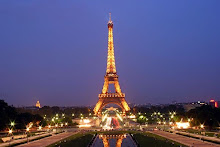Having another day of absolutely perfect spring climate, we drove some one hundred kilometers across many of the towns and rivers I have learned of so intensely in the past two days. What took the Allies many months to accomplish in the Second World War at an unimagined cost, we accomplished in ninety minutes by car. Only four hours ago I was in the town where the German Capitulation was put on paper in 1945. For certain, town names have taken on a haunting new dimension for me. Seeing the name Arnhem on the directional road signs was unsettling. Fortunately, the mission today proved a far happier one – a visit to a 10,000-acre national park in which is set an astounding museum and twenty-five acre sculpture garden.
In some respects the Kroller-Muller Museum is the closest thing to perfection that can be attained in the museum world. The building itself contains many elements of Frank Lloyd Wright and I am certain that research would reveal a connection between the architect of the museum and Frank Lloyd Wright. The building, all on a single level, provides an exquisite uninterrupted visual connection to the emerald oasis of the sculpture gardens while not distracting from the artwork inside. The sizes of the galleries were perfect and the amount of artwork placed in each just right. Somehow, the ceiling panels created a color spectrum similar to northern indirect sunlight, which made the viewing quite pleasing. And what was on view was astounding – ninety-one Van Gogh paintings and an equal or larger number of his drawings.
The drawings revealed an entirely different aspect of the artist I had no prior knowledge of. So often the only thing we think of with respect to Van Gogh is some madman who was good with a paint brush who then mailed his ear to his girlfriend and then blew himself away at age 37. The reality is that Van Gogh clearly had highly developed perceptual skills and was intensely interested in the lives of ordinary people doing very ordinary things. He was anything but mad. It is conjectured that Van Gogh may have well been tormented by a brain tumor and or tinnitus. My own experiences with tinnitus make it easy to relate to his daily challenges. His letters, drawings, and paintings suggest something far more substantial than this unstable madman stereotype. That he produced what he did while suffering so, is only further validation of the depth of his creativity. Amazingly, all of Van Gogh’s prodigious output was completed in a mere ten years. One can only conjecture what would have resulted if he had lived another forty or fifty years.
Mixed in with this vast store of creativity from one tortured soul were Mondrians, Seurats, Gaugains, and Picassos, three generations of Toorop, Leger, and a number of older Dutch masters. This whole museum was the result of the vision of an industrialist’s wife. Helene Kroller-Muller became a true patron and supporter of the arts. It certainly did not hurt her efforts to be married to the richest man in the country at the time. It would not be a stretch at all to suggest she may be personally responsible for Van Gogh’s work becoming the most valued objects on earth. She and her husband bought up anything by Van Gogh that came to auction during the thirty years following his death. Sadly, Van Gogh left this world with no knowledge that an angel would come to care for his genius visual creativity so intensely, conserve it, and imprint it permanently on the public domain of this world.
Helene proved to be an example of good stewardship of the privilege of a high position in society and giving back to the masses. Her husband donated the whole of the estate in 1934 as a national park along with the museum, its contents, and a hunting lodge that alone is worth a several hour drive to see.
Even seventy years after Helene’s death she has continued to fulfill her mission, giving to this visitor, through her visionary efforts, a much-enhanced sense of the creativity that is so abundant in this unpretentious beautiful land and more specifically that of the Dutch painter Vincent.
Subscribe to:
Post Comments (Atom)

No comments:
Post a Comment